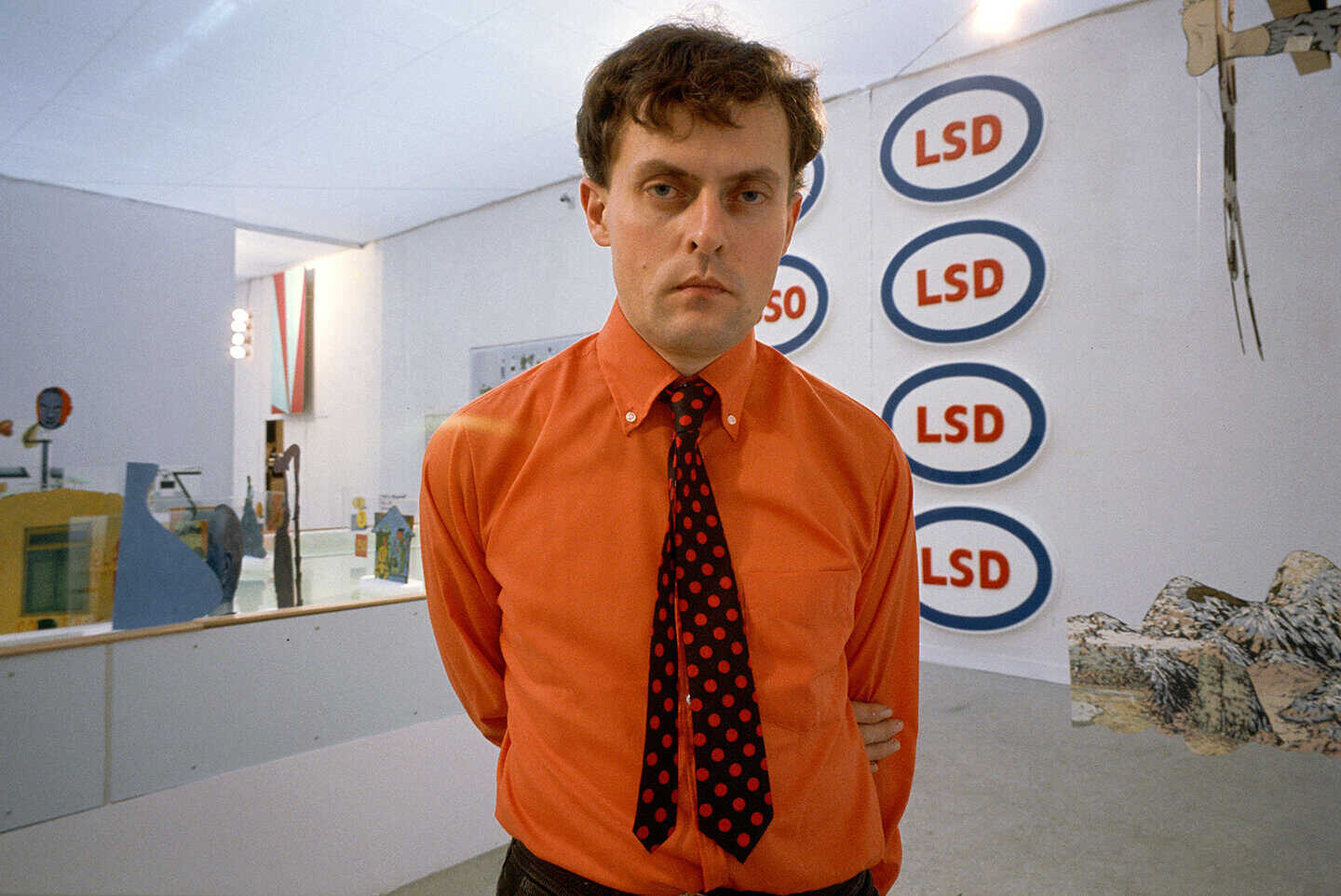Öyvind Fahlström & Friends
February 16–May 1, 2022
Museum Tinguely’s Party for Öyvind is an exhibition centred on the life and work of Öyvind Fahlström (1928–1976). In the course of his all too short career, he created an oeuvre that overstepped boundaries in every respect. Starting in the 1950s, he built up an international network of friends and fellow artists, over 80 of whom are also represented in the show. Their works in disciplines as varied as poetry, art, music, dance, theatre, performance, and film reveal just how mutually inspiring their biographical and artistic trajectories and the connections between them were. Fahlström was working at a time when change was in the air, when a young generation began to venture along new paths in the political, social, and personal spheres and to actively oppose the colonialist, patriarchal politics of the preceding generations. Fahlström and his friends belonged to an avant-garde whose ideas, actions, and art all turned on this quest for the new.
Öyvind Fahlström was born to Scandinavian parents in São Paulo, Brazil, in 1928. In July 1939, aged just ten, he travelled to Stockholm to spend six months with his relatives. As the outbreak of the Second World War prevented his returning to Brazil, he spent the remainder of his childhood and adolescence with an aunt in Stockholm. After the war, he studied art history and archaeology in the Swedish capital as well as in Rome. On moving to Rome in 1952 he immediately immersed himself in the local art scene, creating his first works and befriending fellow artists such as the painter Giuseppe Capogrossi, whose handling of signs and symbols was an important inspiration for the much younger Swede.
Back in Stockholm he cultivated friendships with fellow artists, art historians, museum curators and directors, musicians, and countless other creatives. He was also a great champion of the Moderna Museet that opened in 1959, and besides being involved in a number of cross-disciplinary projects there would later become the museum’s own personal ambassador to the USA. Soon, Fahlström was exhibiting outside Sweden, most notably in 1958 at Daniel Cordier’s gallery in Paris.
In 1961 Fahlström travelled to the US on a one-year stipend together with his partner and collaborator, Barbro Östlihn, whom he had married the previous year. They were introduced to the New York art scene by Billy Klüver, a Swedish engineer who worked for Bell Laboratories and was the founder of Experiments in Art and Technology (E.A.T.), an institution set up to assist artists with the technical aspects of their work. The couple’s first friends in New York were Patty and Claes Oldenburg. Fahlström, moreover, was able to take over Robert Rauschenberg’s studio and so became a neighbour of Jasper Johns. Suddenly at the centre of America’s rapidly changing art scene, he experienced the rise of Pop Art and happenings at first hand. Östlihn and Fahlström stayed on in the city even after the stipend ended and remained a fixture of the New York art scene right up to Fahlström’s death in 1976.
Not that the connection to Sweden had ever been severed: Fahlström, for example, represented his country at the Venice Biennale of 1966, which is why he was unable to take part in HON, the gigantic sculpture of a reclining woman that Niki de Saint Phalle, assisted by Jean Tinguely and Per Olof Ultvedt, installed at the Moderna Museet that same year. Fahlström was also a poet and in 1953 published the world’s first Manifesto for Concrete Poetry. He also wrote plays, took part in performances, happenings, and theatrical stagings, and, collaborating closely with his wife, created an artistic oeuvre consisting of paintings, a vast array of prints, and three-dimensional installations that range in style from the ‘peinture’ to the ‘comic’ and address all the political, social, and societal issues of the day.
Party for Öyvind reflects a period that was shaped largely by the challenges of the aftermath of the war, but that also offered unique opportunities for a new brand of openness and playfulness in art as a younger generation sought to throw out the old order and carve out a lifestyle of their own. The emphasis now was on joie de vivre, hope in the future, the right to one’s own identity and sexuality, and the primacy of self-expression in art, music, literature, and poetry.
The exhibition brings together the works of many of the most influential artists of the 1960s and 1970s, including Alexander Calder, Andy Warhol, Barbro Östlihn, Carl Johan De Geer, Christer Strömholm, Claes Oldenburg, Cy Twombly, Dennis Hopper, Ernest Cole, Faith Ringgold, Gunilla Palmstierna-Weiss, Jean Tinguely, John Cage, Kiki Kogelnik, Lee Bontecou, Lena Svedberg, Marie-Louise Ekman, Marisol, Merce Cunningham, Mimi Gross, Niki de Saint Phalle, Patty Oldenburg, Peter Weiss, Robert Rauschenberg and Roy Lichtenstein – men and women in more or less equal numbers. And, of course, Fahlström himself.
Barbro Schultz-Lundestam, Guest Curator
Gunnar Lundestam, Guest Curator
Andres Pardey, Curator Museum Tinguely






